Dominque Gipson
Could you share how you first got into street photography and what keeps you inspired to stay in this genre?
I was first drawn to street photography during my photography studies, where I explored the work of various influential artists. I was particularly inspired by the work of Vivian Maier, as her compelling style helped me discover the power of documenting daily life in the streets. Further study of artists like Henri Cartier-Bresson and Nan Goldin deepened my understanding of how photography can communicate raw emotion and unique perspectives. I remain inspired by the ever-changing nature of the streets, and the continuous opportunity to capture spontaneous moments and unexpected truths. This element of discovery is what consistently drives my work in this genre.
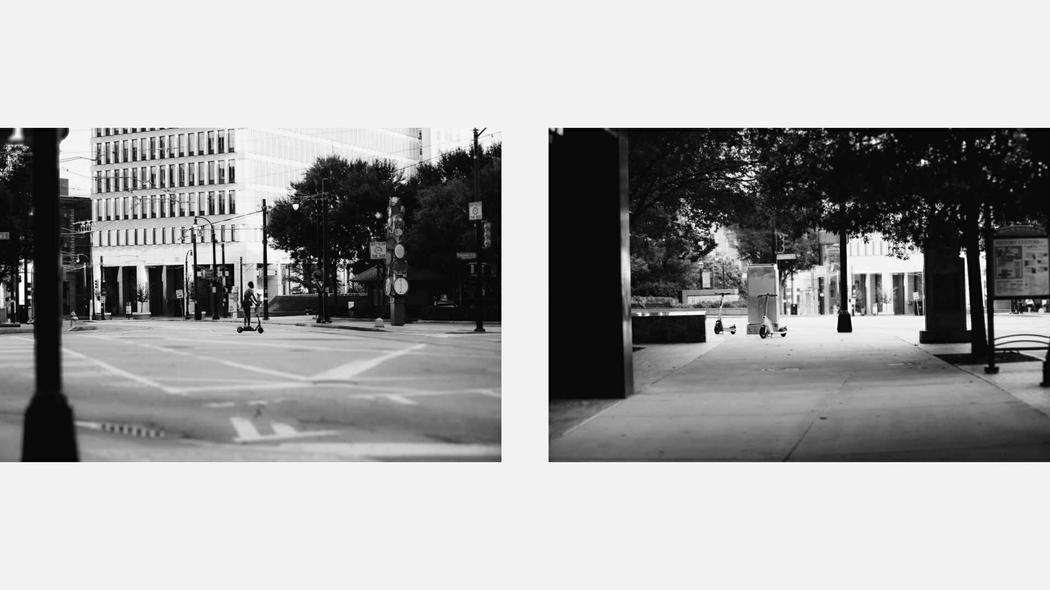 Dominque Gipson | Solitude In Transit | 2025
Dominque Gipson | Solitude In Transit | 2025
What draws you to working with both film and digital mediums, and how do you decide which to use for a particular shoot?
My interest in working with both film and digital stemmed from my desire to broaden my photographic approach. While I started with digital, I was drawn to film for its unique style and nostalgic authenticity. I select my medium based on the story I want to tell. Digital is ideal for capturing crisp, vivid moments, while film is better suited for evoking a sense of drama or nostalgia. Ultimately, the choice between the two is a creative decision that serves the specific narrative I’m aiming to convey.
Can you describe your process when you go out to photograph—do you plan locations or follow spontaneous moments?
My process is a blend of both planning and spontaneity. I make a point of always having my camera on hand, as some of the most compelling shots occur unexpectedly. For specific locations that require more attention, particularly in a busy city like Atlanta with parking constraints, I will scout and plan a return visit. This two-pronged approach allows me to capitalize on immediate, spontaneous moments while also capturing planned scenes that demand a more deliberate approach.
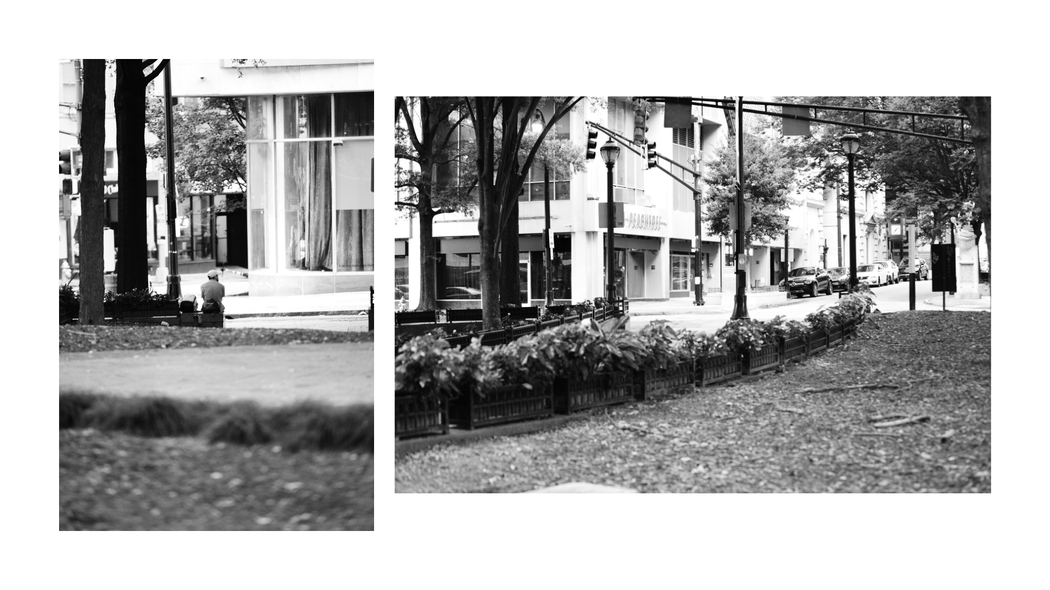 Dominque Gipson | The Weight Of Empty Corners | 2025
Dominque Gipson | The Weight Of Empty Corners | 2025
Your series pairs presence with absence. How did this idea of diptychs come to you, and why is it important for conveying solitude?
The idea for using diptychs to explore presence and absence came to me while studying the technique and reflecting on my existing body of work. I realized I had images of subjects within a space, as well as images of that same space when empty. Pairing them became a powerful way to tell a complete story. This approach is effective for conveying solitude because it juxtaposes two distinct perspectives: that of the solitary subject and that of an observer viewing the isolated space. This pairing highlights the universal experience of solitude from both an internal and external viewpoint.
In these images, black and white plays a key role. What does removing color reveal to you about emotion and space?
I’ve always been drawn to black and white photography, and I chose it for this series to emphasize the themes of isolation, calm, and quiet. Removing color allows for a more dramatic, serious mood that encourages the viewer to focus on the emotional essence of the image. For this particular project, I felt that color would have been a distraction, pulling focus away from the intended narrative of solitude. By stripping away the vividness of the world, I was able to convey a more powerful and relatable emotional experience.
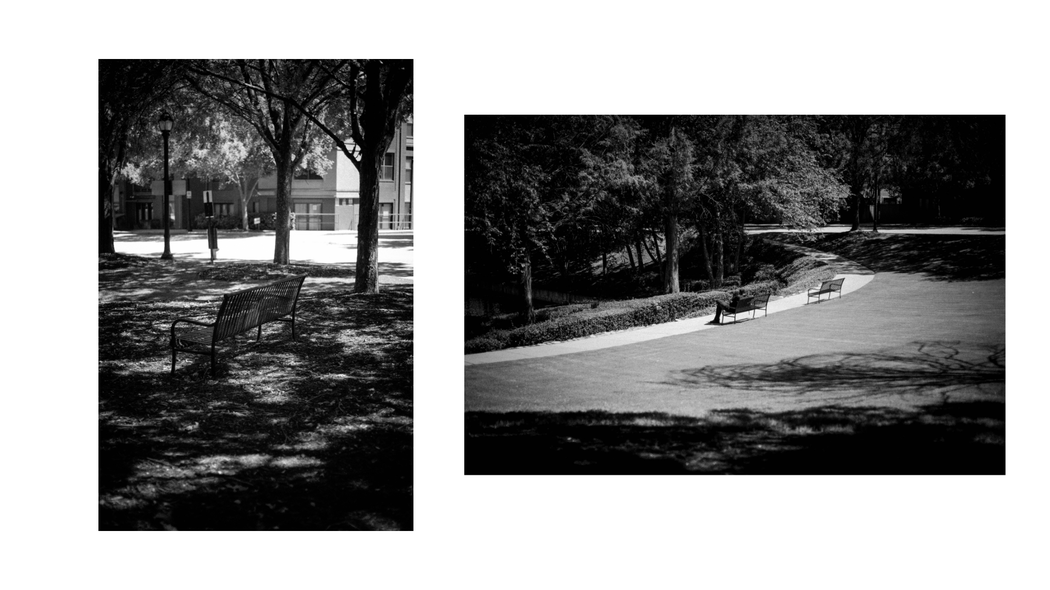 Dominque Gipson | When The World Looks Away | 2025
Dominque Gipson | When The World Looks Away | 2025
How do you choose which two images belong together as a diptych?
After developing the concept for the diptychs, my selection process became deliberate. I would photograph a scene with the subject present, then wait for them to leave so I could capture the same area empty. The diptych is created by pairing these two photos, which show the identical space but highlight the distinct difference between presence and absence. This process allows me to create a narrative that speaks to the viewer on a deeper, more conceptual level.
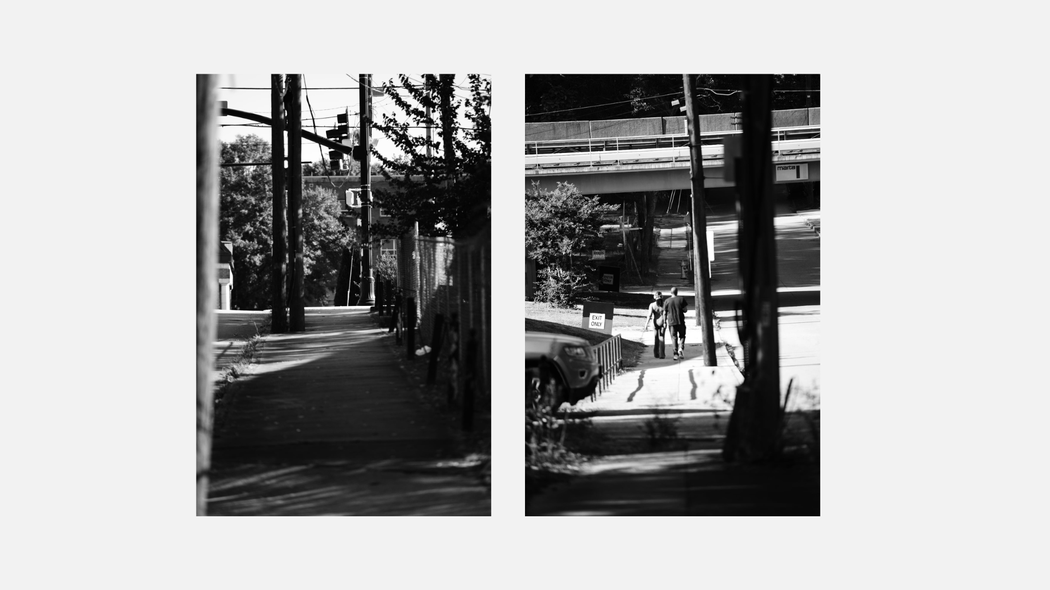 Dominque Gipson | With And Without | 2025
Dominque Gipson | With And Without | 2025
How has living in Atlanta shaped the way you see and photograph the city’s hidden corners?
Living in Atlanta has given me a unique perspective on the city beyond its flashy, mainstream image often portrayed in media. I’ve discovered a rich diversity in its neighborhoods and learned to look beyond the surface to capture the streets’ hidden truths. My experience of seeing less-traveled, quieter corners of the city directly influenced my series on solitude. While Atlanta is known for its vibrant events, it is in the moments of calm between the activity that I find a powerful sense of isolation. My work captures that specific feeling, offering a more nuanced and introspective view of the city to my audience.

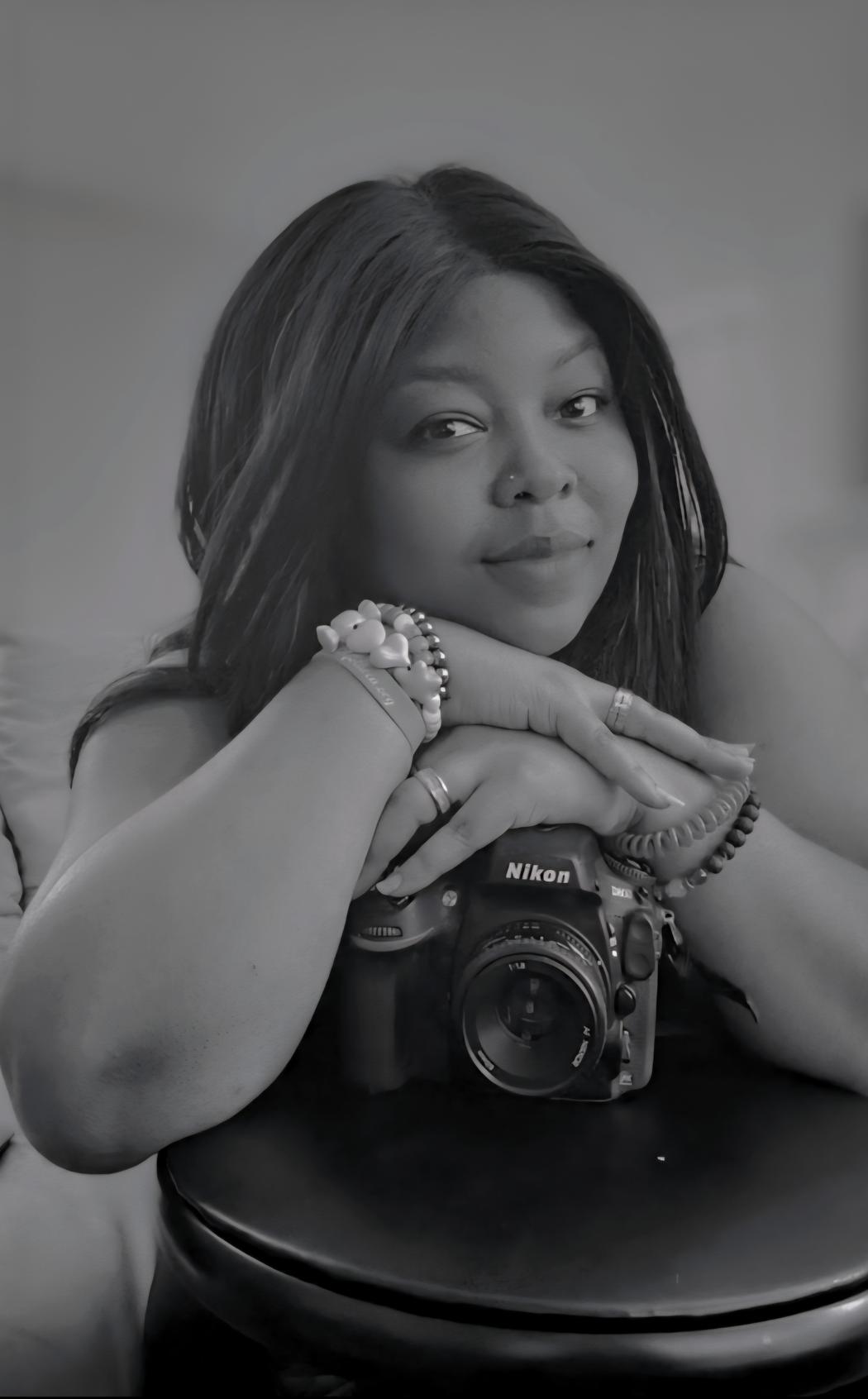
Leave a Reply